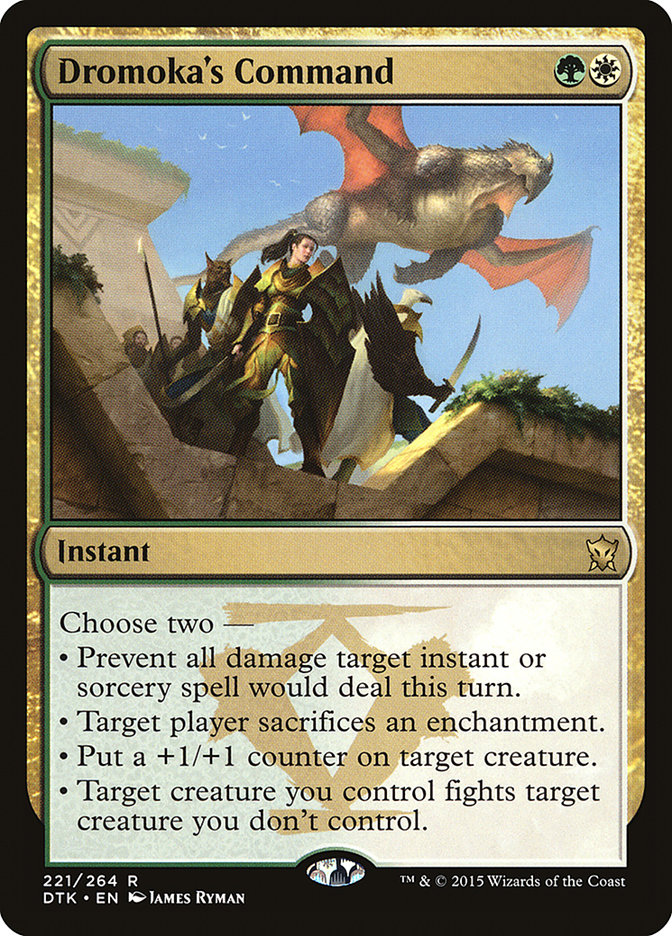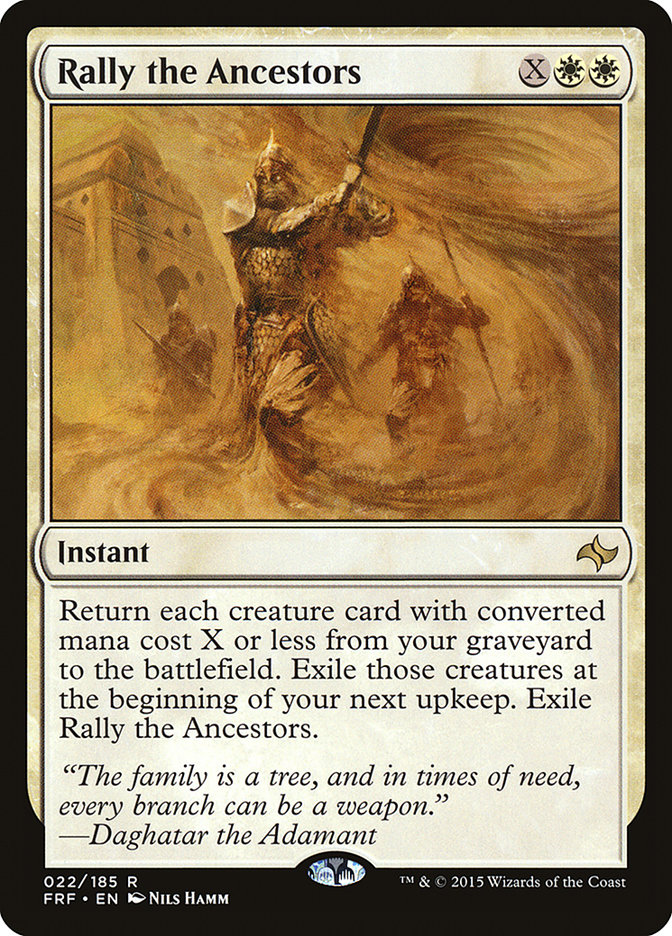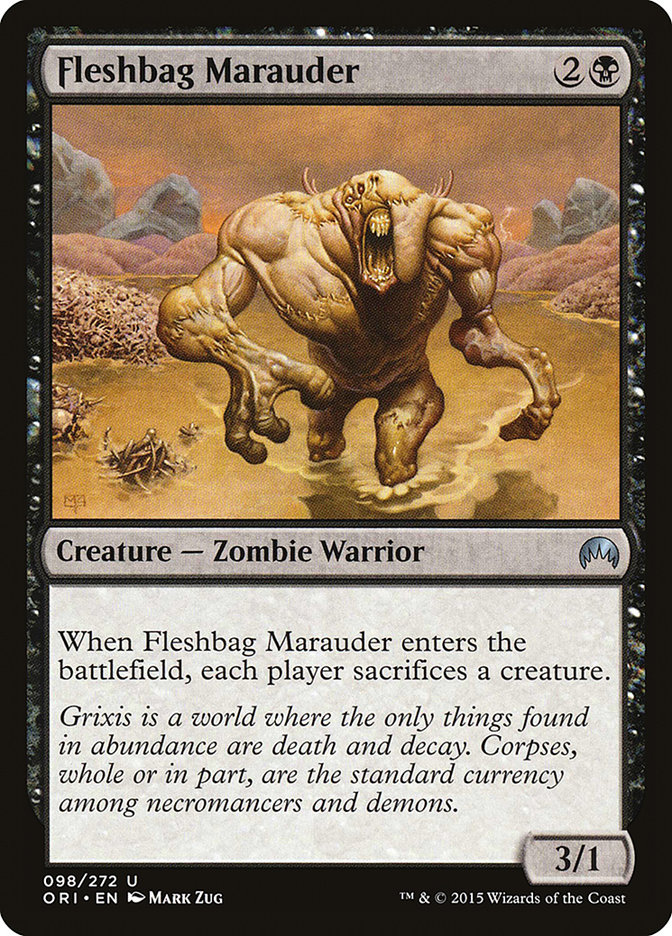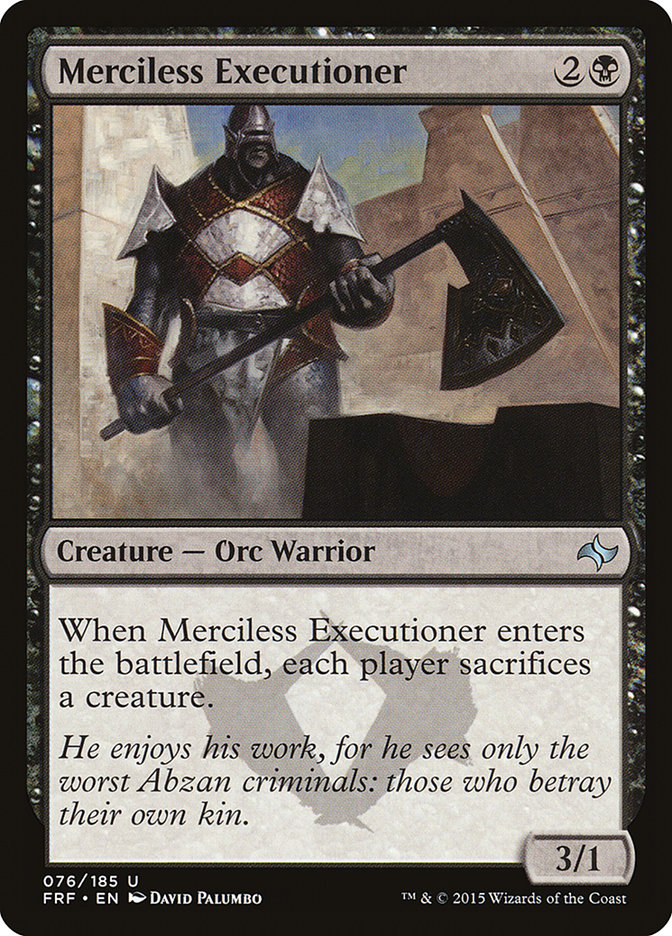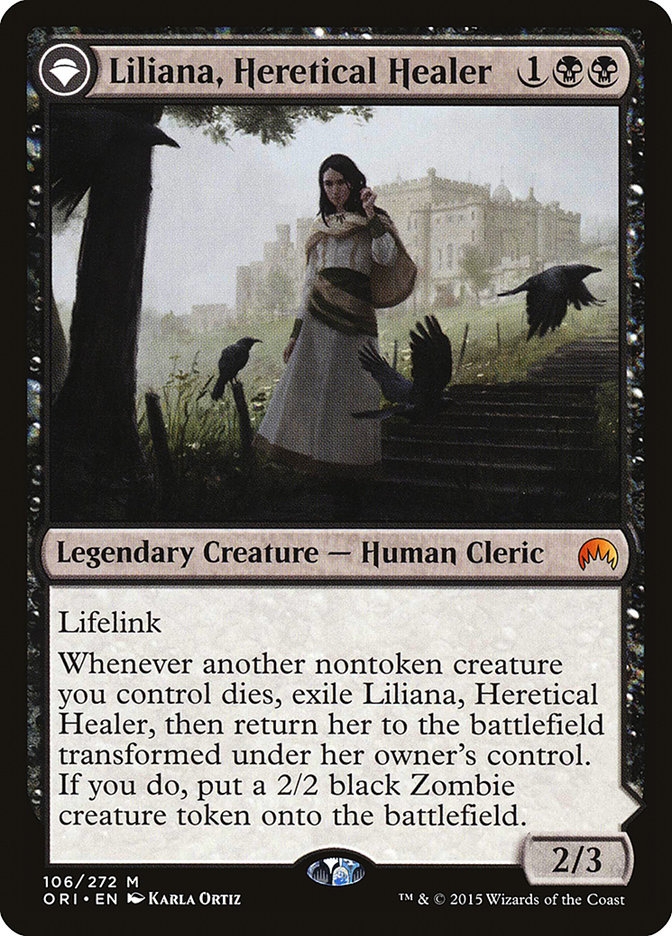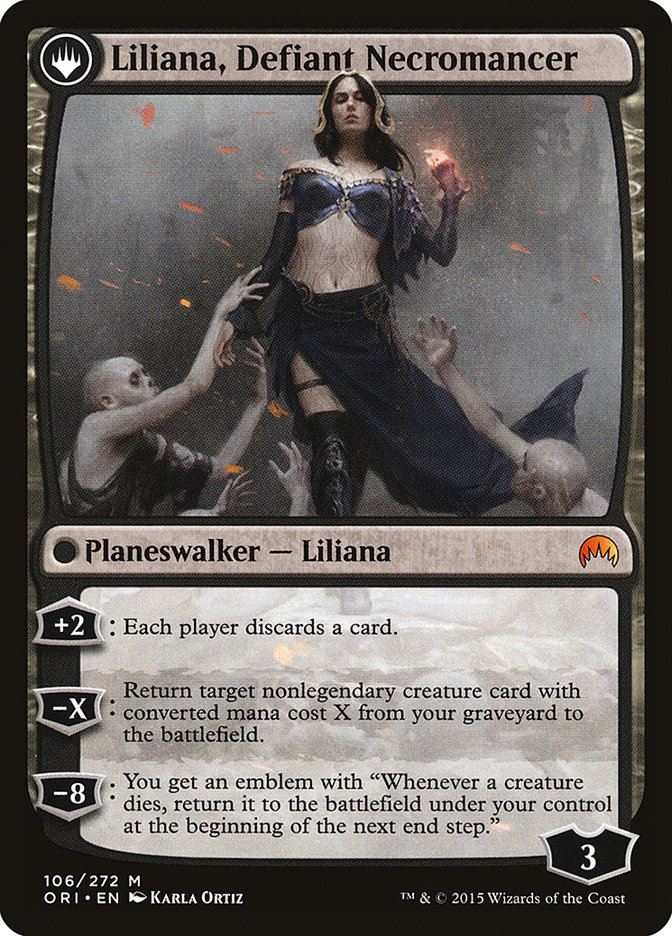Two weeks ago at the Open Series in Chicago, I was convinced to play G/R Devotion. Ultimately, it won the tournament and put three copies into the Top Four, which means I made the right choice in deck selection. But my results in that tournament reflected how I felt about the deck, and how fully disinterested I am in casting gigantic monsters and crossing my fingers.
I get it. Standard is great. We get to do whatever we want to do, so long as that means playing green. Like the weeds starting to creep up on my porch, green is slowly infiltrating every archetype. Satyr Wayfinders in U/B Control, Atarka’s Command in Mono-Red, and the ten other major archetypes featuring Forest are running rampant.
Even the traditional W/U Heroic deck doesn’t actually like to play Magic. Aqueous Form and Stratus Walk are tools for just ignoring and racing your opponent, and four copies of Ordeal of Heliod make winning that race quite easy. The more I thought about Logan Mize Heroic deck from Chicago, the more it made sense, but that still isn’t the type of Magic I like to play.
Creatures (16)
Lands (20)
Spells (24)

Cross my fingers and hope my opponent makes a mistake, or just doesn’t have the right answer. Feels a lot like casting Show and Tell.
After playing six games with the deck and winning four of them, I knew that it wasn’t for me. Aqueous Form is a great card, and I don’t even mind having access to it against particularly annoying creature decks, but it felt too much like solitaire. It also just felt underwhelming against a non-green deck.
So what’s different about Bant Heroic? It has a lot of the same elements as W/U Heroic, and has a similar gameplan. But the games play out in a drastically different manner, and you can even build it to have a powerful sideboard plan against removal heavy strategies. In many ways, it plays a lot like a Delver deck, putting pressure on the opponent early on and forcing them to walk into your cheap counterspells. Gods Willing is such a strong Magic card, but only if your opponent actually cares about killing your creature. If you aren’t able to threaten them, it doesn’t actually do anything.
But Bant Heroic lets you take the fight to your opponent. Literally.
Where the W/U version of Heroic puts all its eggs into one basket, Dromoka’s Command is a proactive way to punch your creatures through in combat while also disrupting your opponent. It can also make two different creatures into significant threats, making spot removal a little less backbreaking. When you’re all-in on Aqueous Form, one resolved removal spell will often end the game.
The Bant version of Heroic also lets you play up to eight fetchlands, making Treasure Cruise easier to cast. And since you are playing Treasure Cruise in the maindeck, your opponent’s removal spells hurt much less. Every creature they kill brings you one more mana closer to Treasure Cruise, putting you right back in the game and usually ahead on resources.
What I like most about Heroic is that it is difficult to play against, in all forms. Figuring out when to play around a protection spell and when to go for gusto is tough. One mistake against Heroic can cost you a game, but playing scared can also lead to losing the game over time. Taking too much damage from an early creature can be dangerous, as is giving the opponent an extra draw step or two to find a protection spell. Sometimes there isn’t a right decision, but you can play against Heroic in a way that gives you the best chance of to win.
I tend to lean on the side of “kill the creature on your opponent’s end step.” If they do have the protection spell, you take less damage, but you also force them to use mana on their own turn to protect their creature. This could open a window for you to kill their creature on your next turn while they’re low on mana or protection. If they are tapped out, kill their creature before they get to untap. Just because your Hero’s Downfall is an instant doesn’t mean you can’t cast it on your own turn!
Bant Heroic is a bit more interactive than W/U Heroic, and it’s built in a way that allows it to play a longer game. Dromoka’s Command is also an absurd card, giving Heroic outs to various enchantments that could otherwise be problematic. You can also fight opposing creatures, all while pumping your Heroic creatures. If I had to pick a “best Dromoka’s Command” deck, Bant Heroic would be it.
Creatures (17)
- 1 Battlewise Hoplite
- 4 Favored Hoplite
- 4 Hero of Iroas
- 2 Lagonna-Band Trailblazer
- 4 Seeker of the Way
- 2 Monastery Mentor
Lands (22)
Spells (21)

First of all, Bant Heroic (and Heroic more generally) is very strong against decks without much removal. Being able to make a big creature early in the game without fear of losing it means you’ll be able to spend your mana every turn as opposed to constantly holding one or two back for protection. When your deck plays so many cheap ways to draw cards, using all of your mana every turn can give you a significant advantage.
Heroic is also a favorite against most versions of Abzan Control, as they’ve become much slower since they’ve moved away from Sylvan Caryatid. You don’t have to be afraid of a fast Elspeth, and you can even beat a resolved Elspeth on occasion thanks to Monastery Mentor. Don’t get me wrong, Elspeth is still insanely good against you, but it is rarely game over once it hits the battlefield.
Since their big sweeper is now Languish, you can also make your main creature big enough to survive it without much effort. Languish, like other sweepers, makes Monastery Mentor a little bit worse, but having the ability to go wide against an opponent with a lot of creatures or spot removal is important. Mentor, along with some Defiant Strikes and protection spells, can assemble an army in a short amount of time. Treasure Cruise and Mentor play nicely together, fueling Prowess and making more creatures to boot. Both Treasure Cruise and Mentor get better as games go longer, giving your deck a way to put up a fight and rebuild resources.
I’ve written a bit about Heroic before, and even though I did well at the Open Series in Richmond last weekend with it, there is a much bigger story.
Creatures (32)
- 2 Nantuko Husk
- 2 Fleshbag Marauder
- 4 Elvish Mystic
- 3 Mogis's Marauder
- 4 Satyr Wayfinder
- 3 Grim Haruspex
- 3 Merciless Executioner
- 3 Den Protector
- 4 Deathmist Raptor
- 4 Liliana, Heretical Healer
Lands (20)
Spells (8)

Ray Tautic’s deck is insane. If you haven’t seen it yet, then you probably aren’t trying very hard. This deck has been talked about ad nauseam since Ray won Richmond, and for good reason. It has my vote for the best Collected Company deck in any format. It has some of the best “value” Rally the Ancestors I’ve ever seen, while also keeping true to the deck’s combo element.
When playing against Ray, both CVM and myself would regularly have three cards in hand, look up, and notice Ray still had five or more. Grim Haruspex along with so many Edict creatures and chump blockers means that your hand will always be full when playing this deck. We saw Mathew Tickal’s version in Chicago, which was a great start for the archetype, but this version doesn’t even need to cast Rally the Ancestors to beat you. Value threats like Deathmist Raptor and Den Protector keep the pressure on while providing virtual card advantage
Oh yeah, and Liliana is friggin’ bonkers.
After watching just a few games of Abzan Rally in action, I told everyone I talked to that it was the best deck in the room. I figured there were maybe two decks at the top tables that could make it into Top Eight that stood a chance at beating him, and I was not one of them. I was rooting for a good bracket as we moved to the Top Eight, and facing Ray in the finals was almost as good as it was going to get. I just had to hope someone else could topple the beast.
As we sat down for the finals, Ray and I talked a bit about the matchup since we had already played (and he had played against CVM earlier in the day too). I tried not to hint at how poorly-positioned I was in the matchup and tried to make the best of a bad situation. I could still win the match, after all. I just knew I was an underdog.
Long story short, Ray hit spectacularly well on his Collected Company in game three to clinch the match. Afterwards, I wasn’t upset. I wasn’t angry. It might have been the least emotional I’ve ever been after losing in the finals of a tournament. My deck was outclassed, and that was that. Ray deserved that win because his deck was just better than everyone else’s.
But what makes Abzan Rally a great deck?
Most decks that play Collected Company don’t really have much of a plan for it. In actuality, Collected Company is a weird card advantage spell that functions best when hitting “value” creatures. When your creatures act like virtual spells, it makes Collected Company much more desirable. Think Silumgar’s Sorcerer in the Blue Devotion decks.
But here we have Fleshbag Marauder and Merciless Executioner as removal spells to hit as well as Liliana, Heretical Healer to combo off a bit. Making a zombie mid-combat while your opponent sacrifices a creature is pretty huge, and then you get to untap with an active Liliana, Defiant Necromancer to start eating away at their hand or just re-buy a Fleshbag Marauder to clean up the rest of their board.
With Grim Haruspex in the mix as well as Mogis’s Marauder and Nantuko Husk, you can draw a ton of cards or just kill your opponent out of nowhere. And did I mention the deck also plays Deathmist Raptor?
Most decks that play Rally the Ancestors are fully focused on using it as a combo enabler. Whether that means Gray Merchant of Asphodel, Siege Rhino, or just Nantuko Husk, Rally the Ancestors for a bunch of creatures will usually end the game. Giving your creatures haste so that they can attack also helps you get around the exile clause on Rally.
But since this version plays so many sacrifice creatures like Fleshbag Marauder, Rally the Ancestors can just be cast as a virtual Sphinx’s Revelation. Bringing back Nantuko Husk and Grim Haruspex can draw you a ton of cards, and just getting back some Satyr Wayfinders to block can fuel a later Rally.
While Rally the Ancestors isn’t always game over in this version, every time you cast it can help you dig deeper into your deck and make the next one lethal. At the very least, you can use Rally to control your opponent’s board, build your own, or fill your hand. And when Rally can be cast at a lot more points in the game for value, it becomes much more dangerous here than in other builds.
3) Fleshbag Marauder and Merciless Executioner
While these two cards are identical in functionality, having two different versions means you can play more than four total copies. I don’t know what the exact right number of them is yet, but five in the maindeck with a sixth in the sideboard felt like plenty against my Heroic deck. I rarely had a creature on the battlefield after the fourth or fifth turn since the sacrifice creatures work so well with Liliana.
While these two creatures give you some virtual removal for your creature-based deck, they also give you a board presence while disrupting your opponent. Sacrificing a stray Satyr Wayfinder is usually going to be the case, but what your opponent sacrifices will usually be much better than what you’re losing. After all, you want more creatures in your graveyard for Rally the Ancestors, so you can do it all again later if they happen to rebuild.
4) Liliana!
The front side of Liliana is pretty solid against aggressive decks, but she kicks it into high gear with so many sacrifice creatures. Being able to flip Liliana, make a zombie, and rebuying Fleshbag Marauder is a big game against creature-based decks. On top of that, she can flip after casting Rally the Ancestors, making the exile clause on Rally a little bit easier to dodge.
In actuality, Liliana isn’t the best when she’s just being cast in this deck, but bringing her back with Rally or coming in off of a Collected Company means she’s likely triggering that turn. If you cast either Rally or Collected Company while your opponent is attacking, you can trade off with most of their creatures and still be left with a Liliana (and more) on the battlefield. It is… pretty disgusting.
5) The Fog Effect
Have you ever been scared of attacking due to the threat of Restoration Angel or some other flash creature? Imagine that feeling but multiply it by a hundred and that’s the feeling you get when trying to do combat math against a deck playing Rally the Ancestors. If you can’t guarantee that you kill your opponent, it is most likely unwise to attack at all.
Doing so will ultimately result in you losing too many resources.
But if you don’t attack, they don’t have to cast Rally, and thus gain an extra turn to draw more lands or spells that fuel a bigger Rally.
…
But this Rally the Ancestors deck isn’t unbeatable. It was just very good for an unprepared metagame. Cards like Anger of the Gods, or token-based strategies like Jeskai Tokens, are solid against it. If you can invalidate their strengths by nullifying Fleshbag Marauder or just exiling their creatures, or if you have some kind of hoser effect, then the Abzan Rally deck doesn’t look all that impressive.
Tormod’s Crypt isn’t going to get the job done, but I think Anger of the Gods and even Hallowed Moonlight will see a lot of play this weekend at the Pro Tour. Abzan Rally has strong matchups against decks that have a bunch of big dumb creatures because they can just grind you out while keeping your board clean. But a deck designed to go around it or go way over the top of it is probably going to get the job done.
Abzan Rally is one of the best decks to hit Standard in some time, but I think we have the tools to compensate for it. Don’t expect it to dominate Standard for too long, but it will be a monstrous entity at the Pro Tour if people aren’t able to catch up in time. With only a week between the Standard Open in Richmond and the Pro Tour and teams needing to spilt their testing between both Standard and Magic Origins Draft, it could result in a perfect storm where Abzan Rally is able to take down the tournament.
With some minor tweaks to the mana and creature base, it will absolutely be the deck to beat.


